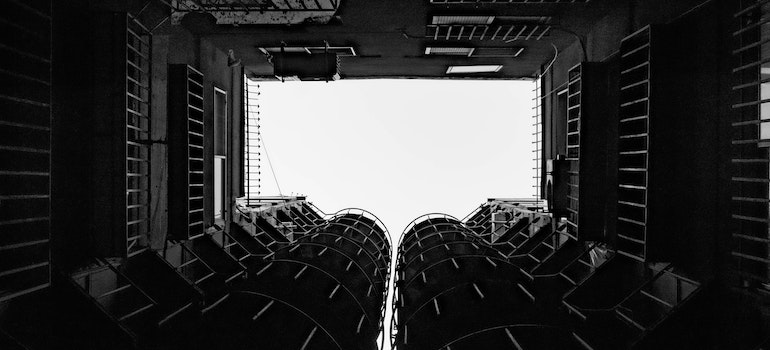Two iconic neighborhoods, West Village and Tribeca, hold their own distinctive appeal. While both areas boast rich histories and vibrant atmospheres, they offer unique lifestyles and aesthetics. This article explores the journey of moving from West Village to Tribeca. It delves into the practicalities, emotions, and personal growth that accompany such a move. If you like challenges and plan on changing your aesthetics completely, all you need is a reputable Manhattan moving company as your trusted partner.
The bohemian heaven of West Village
West Village epitomizes the bohemian lifestyle. Furthermore, it serves as a haven for creative individuals, attracting artists, writers, and musicians for generations. Renowned literary figures like Jack Kerouac and Bob Dylan have found inspiration within its welcoming streets.

The allure of West Village extends beyond its physical features. Its vibrant nightlife, boasting jazz clubs and speakeasies, further enhances the neighborhood’s enchanting character. Residents and visitors can immerse themselves in the soulful melodies of jazz, adding a touch of rhythm to the bohemian spirit. This lively social scene offers endless entertainment options.
However, the true essence of West Village lies within its sense of community and belonging. The neighborhood’s intimate atmosphere cultivates a strong connection among its residents. Contrary to the bustling anonymity of larger urban areas, West Village is where neighbors become friends, local businesses know your name and a shared sense of camaraderie thrives. Experience the welcoming nature of the community and a supportive environment after relocating with West Village movers.
How to handle the relocation
When transitioning from the bohemian charm of West Village to the industrial chic of Tribeca, there are practical considerations to address. Finding a new home in Tribeca that suits your needs and preferences becomes a priority. This involves:
- Thorough research
- Property viewings
- Potentially working with a real estate agent.
As you search for the perfect property in this iconic neighborhood, you’ll discover a diverse range of real estate options, from spacious lofts with soaring ceilings and industrial aesthetics to sleek, modern condominiums with breathtaking skyline views. Tribeca has higher property prices due to its proximity to world-class dining, cultural landmarks, and the serene Hudson River Park.
The median home price in Tribeca is $2.9M. On the other hand, the median selling price in West Village is twice as low, at $1.4M. Additionally, the houses in West Village sell after 78 days on average. If you’re looking to rent an apartment in Tribeca, remember that the average monthly rent for a 1-bedroom apartment is $4,425.
Once the new home is secured, the physical logistics of the move come into play. You can leave that to a credible moving service Manhattan offers. Adjusting to a different neighborhood dynamic can present its own set of challenges. Tribeca has its own unique rhythm and atmosphere that may differ from the laid-back ambiance of West Village. Familiarizing yourself with the neighborhood’s amenities, transportation options, and community resources is essential.
The unique industrial charm of Tribeca
Once an industrial hub bustling with warehouses and factories, this neighborhood now showcases a captivating fusion of culture, architecture, and vibe. As one explores Tribeca’s vibrant streets, a captivating blend of old and new unfolds, where converted industrial spaces seamlessly coexist.
The distinctive style that industrial draws inspiration from the neighborhood’s industrial past, paying homage to its history. Exposed brick walls, large windows, and open floor plans are iconic elements of this aesthetic, creating an atmosphere that celebrates the raw beauty of the industrial era. Moreover, combining raw materials, sleek finishes, and abundant natural light generates a visually striking environment.

Additionally, the Industrial Chic aesthetic in Tribeca serves as a reflection of the neighborhood’s evolution. It represents a rebirth, as former warehouses and factories are repurposed into luxury lofts, upscale restaurants, and trendy boutiques. Residents love it for many different reasons, and some of them are:
- Culinary scene
- Easy access to other parts of the city
- Commitment to green spaces and community parks
Bohemian vs. Industrial: Which style appeals to you the most?
Living in West Village is characterized by a relaxed and spontaneous lifestyle, emphasizing artistic expression and community engagement. As residents move from West Village to Tribeca, they often find themselves adapting to a shift in lifestyle.
The bohemian spirit of West Village, characterized by its focus on artistic freedom, gives way to a more refined approach in Tribeca. Embracing the industrial chic aesthetic, individuals may gravitate towards minimalist design and clean lines.

This transition with Tribeca movers alters the physical surroundings and invites personal growth and self-discovery. Moreover, the change invites the exploration of new social circles and connections within the Tribeca community.
Adapting and feeling at home in Tribeca
Tribeca’s welcoming community and distinctive charm make it easy to acclimate to its unique rhythm. As you stroll along its cobblestone streets, frequent its artisanal markets, and savor its culinary delights, you become a part of the fabric of this vibrant enclave. The blend of historic warehouses and sleek modern developments mirrors the fusion of tradition and innovation that defines life here.
Whether you’re enjoying a leisurely afternoon at Washington Market Park or savoring the cultural experiences at the Tribeca Film Festival, you’ll quickly discover that feeling at home in Tribeca isn’t just about a physical address; it’s about embracing the spirit of a neighborhood that values both its past and its future.
The final touches of moving from West Village to Tribeca
Moving from West Village to Tribeca may be a big bite to take. However, with the right mindset, everything will go smoothly. Immerse yourself in local spots, discover hidden gems, and get involved in the community. Adapting to the new environment and feeling home in Tribeca requires time and patience. Embracing the neighborhood’s unique offerings, forging new connections, and allowing oneself to grow within the community are essential steps toward feeling settled and content. It is a transformative experience that encourages personal growth and the exploration of new possibilities.







